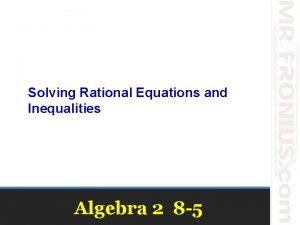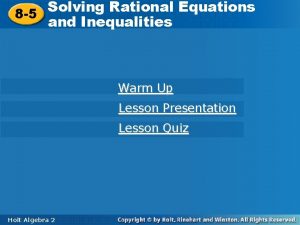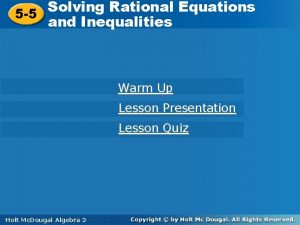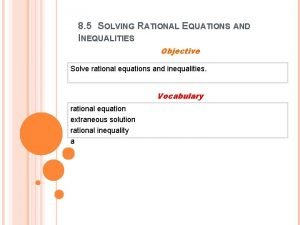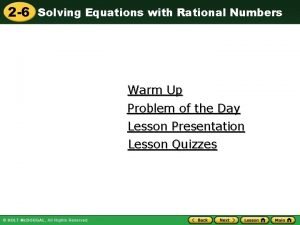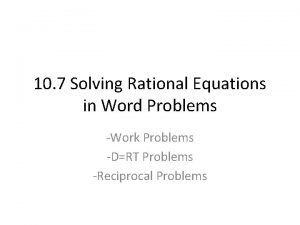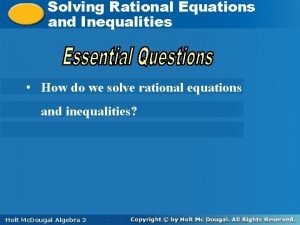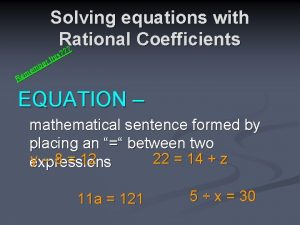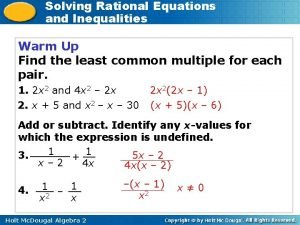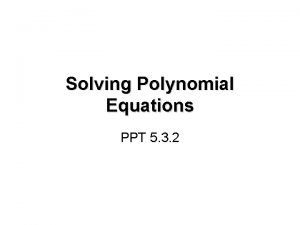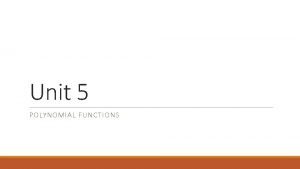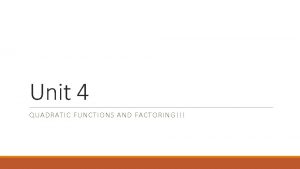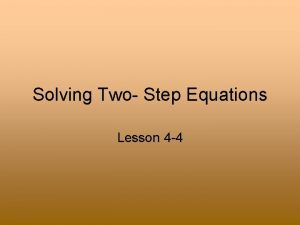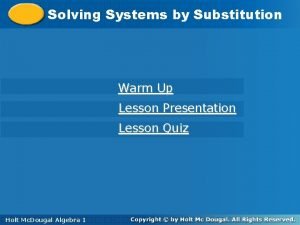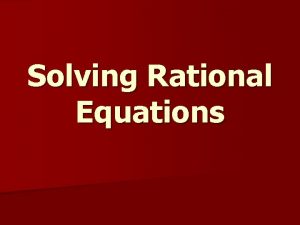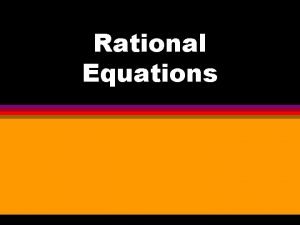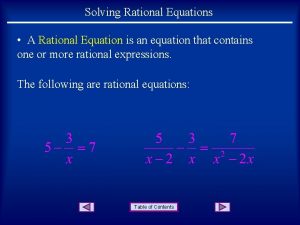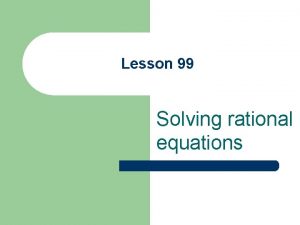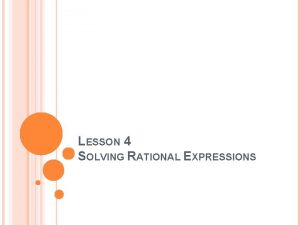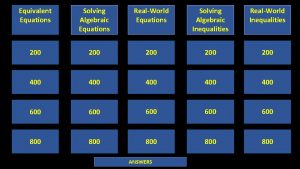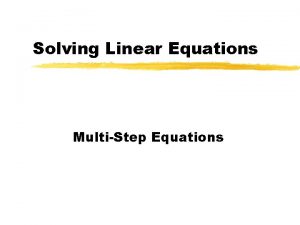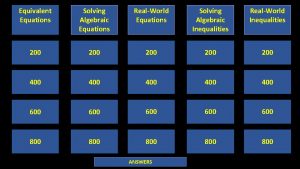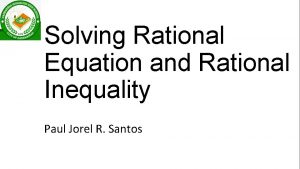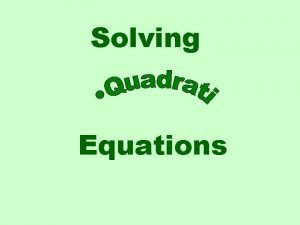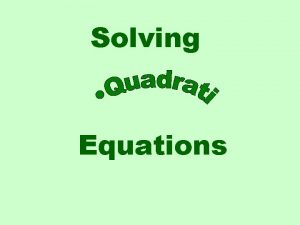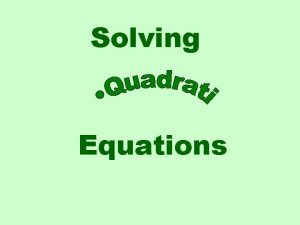Solving Rational Equations A Rational Equation is an
















- Slides: 16

Solving Rational Equations • A Rational Equation is an equation that contains one or more rational expressions. The following are rational equations:

• To solve a rational equation: 1) Find the LCD of all rational expressions in the equation. 2) Multiply both sides of the equation by the LCD. 3) Solve the resulting equation.

• Example 1 Solve: First determine any restrictions on the variable. These are values of x for which any denominator is zero. In this case, x cannot be zero.

Determine the LCD Multiply both sides of the equation by the LCD


These solutions must be compared with the restriction on x found at the beginning of the problem, x ≠ 0. Since neither value is zero, we have the solution.

• Example 2 Solve: Determine any restrictions on the variable.

Determine the LCD Multiply both sides of the equation by the LCD. This is the same as multiplying every term by the LCD.



Compare this solution with the restrictions on x found at the beginning of the problem, x ≠ - 4, 2. Since the solution does not match either restriction, we have the solution.

• Example 3 Solve: Determine any restrictions on the variable.

Determine the LCD Multiply every term by the LCD.


Compare this solution with the restrictions on x found at the beginning of the problem, x ≠ - 5, 0. Since in this case the result is one of the restricted values, it cannot be a solution to the equation. The answer is written as …

 How to solve rational equations and inequalities
How to solve rational equations and inequalities Solve the rational equation 8/x+1/5=3/x
Solve the rational equation 8/x+1/5=3/x Solve the rational equation 8/x+1/5=3/x
Solve the rational equation 8/x+1/5=3/x Solving equations with rational exponents
Solving equations with rational exponents 8-5 solving rational equations and inequalities
8-5 solving rational equations and inequalities Equations with rational numbers
Equations with rational numbers 5-5 solving rational equations and inequalities
5-5 solving rational equations and inequalities Rational equations word problems
Rational equations word problems Solving rational equations
Solving rational equations Practice c solving rational equations and inequalities
Practice c solving rational equations and inequalities Rational coefficient
Rational coefficient Solving rational equations
Solving rational equations Rational equation ppt
Rational equation ppt Algebra 2 unit 5 polynomial functions
Algebra 2 unit 5 polynomial functions Quadratic formula
Quadratic formula Lesson 4 skills practice solve two-step equations
Lesson 4 skills practice solve two-step equations Solving systems of equations by substitution activity
Solving systems of equations by substitution activity
